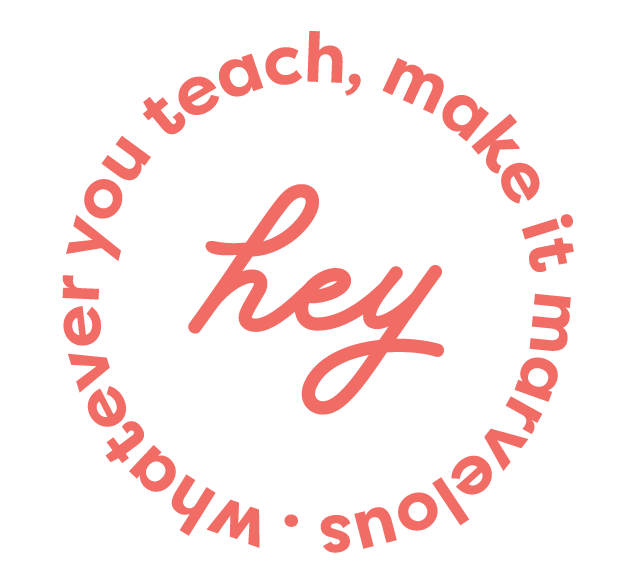How to Grow Your Email List by Launching an Online Challenge
With all the communication and connection tools available to us, email can seem a bit old-school.
Stodgy, even.
But experts from all sectors agree that building and maintaining a robust email list is essential to the success of any modern business.
Plenty of folks opt out of social media altogether, but more than half of humans have email addresses. So if you want to reach the most people, email is the only way to fly.
But you can’t reach them if they haven’t signed up to receive your emails!
An online challenge is just the ticket!
It's an innovative approach for growing your audience and creating a thriving community of followers who will stick with you in the long run. Plus, it's fun and interactive—what better way to ensure potential customers keep tuning into what you have to say than by challenging them along the way? Let us show you how launching an online challenge can quickly bring new subscribers and increased engagement from existing ones.
What is an Online Challenge?
In all likelihood, you’ve encountered online challenges on social media, blogs, and websites multiple times, but here’s a quick working definition:
An online challenge is a multi-step, user-driven series of activities guided by pre-written content.
As a creator, this technique builds your following, and the challenge itself offers subscribers a tangible, fun, motivating reward for signing up. Think week-long meditation challenges, month-long novel-writing challenges, outfit-building challenges, and goal-driven fitness challenges. Anyone writing on any subject can cook up a great challenge.
Online challenges can be run through blogs, Facebook Groups, Instagram, and virtually any online medium, but if you’re aiming to build your email list, your challenge should be email-based.
Why do Online Challenges Work for Email List-Building?
You probably have an email list sign-up box on your website, and might even have a pop-up that appears when readers first visit your homepage. But those are still relatively passive ways to capture new subscribers, and neither offers the reader anything immediate in return.
If you offer an opt-in reward—an ebook or mini-course—you’re ahead of the game since doing so can grow your list exponentially. Yet it’s still a one-shot deal, and some subscribers will simply sign up, nab the freebie, and unsubscribe.
Online Challenges, on the other hand, build your list in lasting, scalable ways by:
Teaching your subscribers to open your emails: Most of us subscribe to dozens of emails we never open or read (we’re totally guilty of this one!). But a multi-part email challenge that builds on itself encourages them to open your emails consecutively. Once a reader gets in the habit of opening your emails—and realizes they’re packed with valuable, engaging content—they’re more likely to continue opening them.
Building rapport: Since you’ll be promoting your challenge far and wide (more on that shortly), you’ll get loads of subscribers who don’t know much about you as an online brand or personality. They sign up because they’re intrigued by the challenge itself, but as they move through the various steps, they become familiar with your voice, message, and mission. This is your chance to turn a random reader into a raving fan!
Highlighting your expertise: A carefully formulated online challenge will help the user learn or gain something while simultaneously positioning the challenge creator as a subject matter expert. If your challenge is yoga-centric, make sure you find ways to showcase your deep knowledge and teaching prowess. If you’re a healer, put your experience and expertise front and center.
Priming subscribers to purchase: Everyone who has worked through your challenge is now a regular email opener who sees you as an expert, trusts you, and is interested in what you have to say. They’ve learned firsthand that you create great free content, so they’ll be much more willing to invest when offered a paid product.
How to Structure a Successful Email-based Challenge
Offering a challenge can work wonders for your email list, but only if that challenge truly appeals to your audience. You’ll want to be strategic at every step in the process.
Find out what your audience wants
If you offer a 10-day core strength challenge, but your readers are more interested in meditation, you’ll get far fewer new subscribers. Utilize polls, track your own stats to see which articles and other content users are reading, and start conversations on Facebook to test the waters before settling on a topic.
Make sure your challenge is unique
OK, it doesn’t have to be one-of-a-kind, but it certainly can’t be a dime-a-dozen! If you go for a “seven days of green smoothies” challenge and don’t find a way to distinguish your version, readers have zero incentive to choose you over your competitors. Pick an angle, add a twist, and find a way to customize your offering.
Keep it short and make it do-able
Length is key. Too short, and you don’t get bankable buy-in from new readers; too long, and participants lose interest. Most experts recommend seven to 10 days for an online challenge. And all of them urge creators to offer something manageable!
Even if you keep your timeline to a week, making subscribers slog through two-hour self-love exercises every day will turn them off. Make your challenge meaty but not overwhelming (aim for participant action steps that take under 10-15 minutes per day).
Promote, promote, promote
Consider buying Facebook ads, post promos to your preferred social media channel, start a challenge-specific Pinterest board, create a series of YouTube videos, post daily reminders to your community, or commit to a daily livestream broadcast on your chosen social media channel. Tell everyone everywhere about the stellar challenge you’ve created, and (gently) nudge them to sign up.
Incorporate interactivity
It may be tempting to write every word of your content challenge ahead of time and then step back and watch it all unfold, but resist the urge to remove yourself. Online challenges that include a social or interactive component are far more popular and effective.
Something as simple as sharing participant images or quotes on social media can keep the challenge top-of-mind and promote accountability. Private Facebook groups work well, too, and require relatively light moderation.
Don’t forget to follow up!
Hopefully, your challenge doubled or tripled your list, but don’t just congratulate yourself and move on. As we mentioned earlier, these folks are now primed to buy from you, so consider offering challenge participants a deal on one of your products or classes.
If nothing else, prep and send a quick poll to find out what worked and what didn’t so you can tweak the challenge for its next round.
Final Thoughts
It’s no lie, building and launching an online challenge will take some doing. But using an email challenge to expand your subscriber base is a truly worthwhile use of your time. You’ll gain scores of new fans, and some will become engaged, invested super-fans who can’t wait to see what you roll out next!














